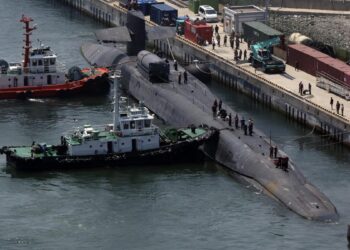[ad_1]

Representational image only.
| Photo Credit: Reuters
The International Monetary Fund (IMF) on March 21 cleared a $3 billion-Extended Fund Facility (EFF) for Sri Lanka, potentially unlocking more loans for the debt-ridden island nation, struggling to recover from last year’s economic meltdown.
“The objectives of the EFF-supported programme are to restore macroeconomic stability and debt sustainability, safeguarding financial stability, and stepping up structural reforms to unlock Sri Lanka’s growth potential,” the IMF said, of Sri Lanka’s 17 th programme with it.
Also read | After India, China gives financing assurances to Sri Lanka for IMF bailout package
It comes about a year after the country went in for a premature default on its foreign debt amid an acute dollar crunch, and six months after reaching a staff-level agreement with the IMF.
“In the 75 years of Sri Lanka’s independence, there has never been a more critical period for our economic future. IMF Executive Board approved our programme, enabling Sri Lanka to access up to $7b in funding from IMF & IFIs. I thank the IMF & our international partners for support,” President Ranil Wickremesinghe said in a tweet Tuesday morning.
India, Japan [as a member of the Paris Club group of creditors], and China, Sri Lanka’s top three bilateral creditors, played a crucial role in unlocking IMF assistance to the island, by providing financing assurances to the Fund. In an open letter to bilateral creditors last week, President Wickremesinghe pledged transparency in the debt restructuring process with creditors, and “comparable treatment of all external creditors”.
While Sri Lanka has been desperate for the IMF’s assistance since last year’s financial crash, securing an EFF of nearly three billion dollars, over four years, hardly guarantees swift economic recovery, Sri Lankan economists have cautioned. As of December 2022, Sri Lanka’s total outstanding public debt increased to $ 84 billion, Colombo-based think tank Verite Research said in its latest debt update. Further, Sri Lanka must service multilateral debt totalling over $ 2 billion during the first half of this year, besides addressing its trade deficit and currency volatility. The IMF has also repeatedly flagged corruption as a key issue in Sri Lanka and will take up a “governance diagnostic exercise”, its first in Asia.
Protesting hardships
In anticipation of the Fund’s assistance, Sri Lanka took a host of policy measures over the last year, including sharply increasing banking interest rates, floating the rupee, raising taxes, and increasing energy tariffs three-fold.
Also read:The aftermath of Sri Lanka’s economic crash
Reeling under high costs of living — and soaring electricity bills now adding to their burden — worker unions across sectors recently resorted to strike action against economic hardships. While President Wickremesinghe held talks with union leaders, his government faces criticism for quelling protests, with frequent reports of police, and others dressed in military gear, firing tear gas and water cannon at protesters.
Asked about the IMF’s engagement with the Sri Lankan government amid concern over the space for dissent, Mr. Peter Breuer, Senior Mission Chief for Sri Lanka, Asia and Pacific Department of the IMF, told a media conference on Tuesday that the IMF’s ambit was “limited” to economic affairs, and the Fund did not have a mandate to interfere with how the government interacts with its citizens.
On Sri Lankan authorities postponing the local government elections, citing lack of finances, the senior official said: “we never recommended postponement of local government elections in Sri Lanka, we would not interfere in a country’s electoral and governance processes.”
Asked about the Fund’s earlier prescription of a wealth tax in Sri Lanka, Masahiro Nozaki, Mission Chief for Sri Lanka, said it was on the cards, and that a property tax and inheritance tax will be introduced by 2025.
[ad_2]
















